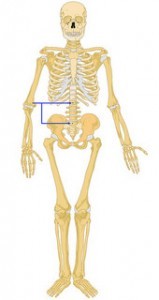Recurrent low back pain is not something you want to ignore and wish away for a better day. In the long run, pain left unattended can lead to degeneration of several key structures in the low back. As the muscles and soft tissues that support the lumbar spine and it’s buoyant elasticity weaken, the structures underneath take on more pain and more impact from sudden trauma. There are successful steps you can take to stay ahead of the game and stay in the game with a healthy back for a life time.
A. Seek a diagnosis. Know what you are up against;
B. A diagnosis is not the end game. Work with your doctor, PT, massage therapist, and any other care practitioner and develop a game plan. Designate a go-to practitioner (usually your PT or Sports Medicine doctor in severe cases or your family practitioner in more generalized back pain cases) who is responsible for calling the shots and knows the big picture.
C. Follow a plan – don’t divert the course of action just because you read something new or someone inserted some good advice. Muscle and joint healing can be frustrating and there is no need to magnify things. You’ll want to know what got you to feeling better and following a plan of care will show you just how you got there. If you truly feel a plan needs tweaking, discuss this with your go-to practitioner and keep him or her in the loop.
D. When rehabilitating a chronic condition that relates to soft tissues and your spine, pay attention to the FIVE STAGES OF REHABILITATION. If you find your treatment isn’t working, refer back to these 5 stages. Was one of the stages skipped or skimmed over? Did you start strength exercises too soon or too aggressively? The 5 stages are as follows:
Stage 1: Assuming there is no visible inflammation, start by attracting a healthy blood supply to the area in need of attention. Help the area soften and reduce muscular guarding associated with pain and spasm. Massage therapy, hot and cold packs, and self massage are all modalities used for stage 1 healing.
Stage 2: Don’t stop at stage 1 but wait until your gait and movement returns to normal before attempting strength or flexibility exercises outside the care of a physical therapist.
Stage 3: Flexibility = get used to moving again. Do not aggressively stretch without the assistance of a skilled practitioner.
Stage 4: Strengthen the region and help the muscles regain their protective function.
Stage 5: Once you’re well on the road to recovery, what will motivate you to keep up fitness? Maintaining a home cardio conditioning and home care strength program will keep recurrences from happening as frequently and it will keep them from happening with such fierce consequences.
Take care and be well. Watch this inspirational story of one of our Hands On Health loyal fans who, despite being diagnosed with several herniated discs, has avoided back surgery by religiously tending to and respecting these stages of rehabilitation: Medical Massage Therapy For Low Back Pain
= = = = =
Hands On Health Massage Therapy And Wellness
7980 Chapel Hill Road, Ste 125
Cary NC 27513
919.854.9555

